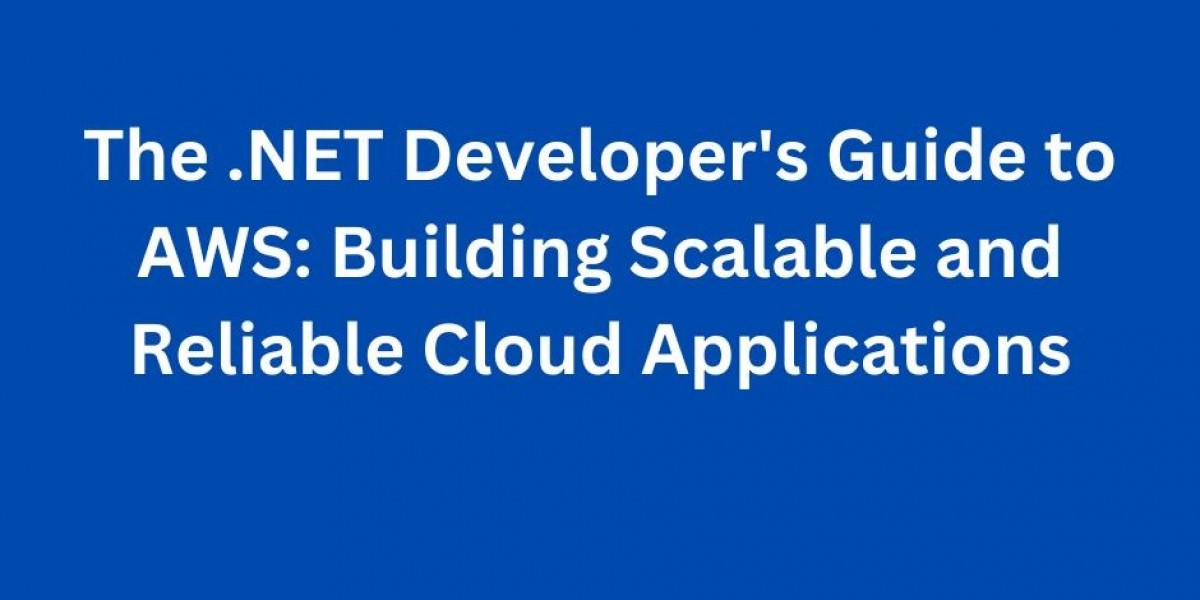AWS (Amazon Web Services) has become a leading cloud computing platform, offering a wide range of services for developers to build, deploy, and scale applications. For .NET developers , AWS provides a powerful and flexible environment to create robust and scalable cloud applications. This comprehensive guide will explore the essential tools, services, and best practices for leveraging AWS with .NET.
Understanding AWS Fundamentals
AWS Regions and Availability Zones: Familiarize yourself with the concept of regions and availability zones to ensure high availability and redundancy.
AWS Services: Explore the vast array of AWS services, including compute (EC2), storage (S3), database (RDS), networking (VPC), and more.
AWS Management Console: Learn how to use the AWS Management Console to manage and monitor your AWS resources.
Essential AWS Services for .NET Developers
Amazon Elastic Compute Cloud (EC2): Create virtual machines (VMs) to run your .NET applications.
Amazon Simple Storage Service (S3): Store and retrieve data objects in the cloud.
Amazon Relational Database Service (RDS): Manage relational databases like MySQL, PostgreSQL, and SQL Server.
Amazon Elastic Container Service (ECS): Deploy and manage containerized applications.
AWS Lambda: Run serverless functions without managing servers.
Amazon API Gateway: Create and manage APIs for your applications.
Developing .NET Applications for AWS
AWS SDK for .NET: Utilize the AWS SDK for .NET to interact with AWS services from your .NET applications.
Serverless Computing: Explore AWS Lambda for building serverless functions and event-driven applications.
Containerization: Use Docker to containerize your .NET applications for easier deployment and management on AWS.
Infrastructure as Code (IaC): Adopt tools like AWS CloudFormation or AWS CDK to define and manage your AWS resources using code.
Continuous Integration and Continuous Delivery (CI/CD): Implement CI/CD pipelines to automate the building, testing, and deployment of your applications.
Best Practices for Building .NET Applications on AWS
Security: Implement robust security measures to protect your applications and data.
Cost Optimization: Monitor your AWS usage and optimize costs by leveraging cost-saving features and best practices.
Scalability: Design your applications to be scalable to handle varying workloads.
Performance: Optimize your applications for performance by using caching, content delivery networks (CDNs), and other techniques.
Monitoring and Logging: Implement monitoring and logging tools to track the health and performance of your applications.
Case Studies: Successful .NET Applications on AWS
Netflix: Netflix uses AWS to power its global streaming platform, leveraging services like EC2, S3, and Elastic Load Balancing.
Slack: The popular communication platform relies on AWS for scalability and reliability.
Airbnb: Airbnb uses AWS to manage its dynamic infrastructure and handle millions of users.
The Future of .NET on AWS
As AWS continues to evolve and introduce new services, the possibilities for .NET developers are expanding. Stay updated with the latest trends and innovations to leverage the full potential of AWS for your .NET applications.
By following these guidelines and exploring the vast ecosystem of AWS services, .NET developers can build scalable, reliable, and efficient cloud applications. The future of .NET development is bright on AWS, offering endless possibilities for innovation and growth.







